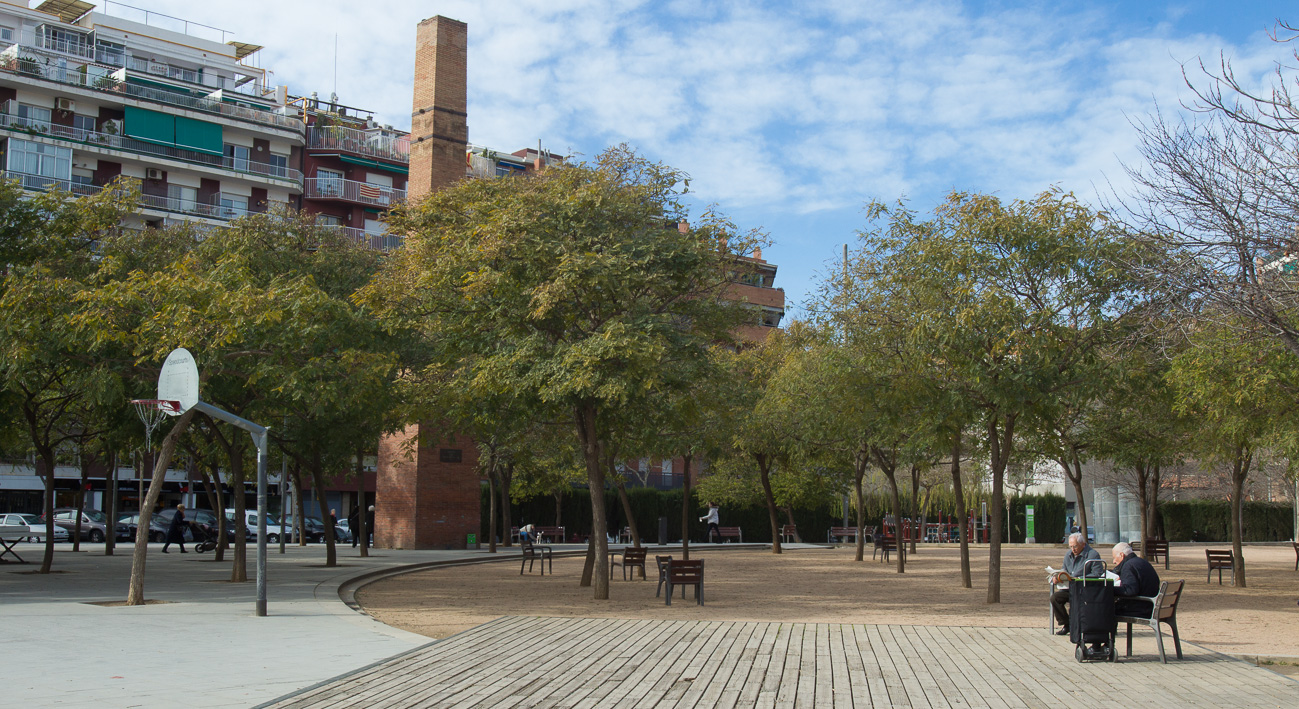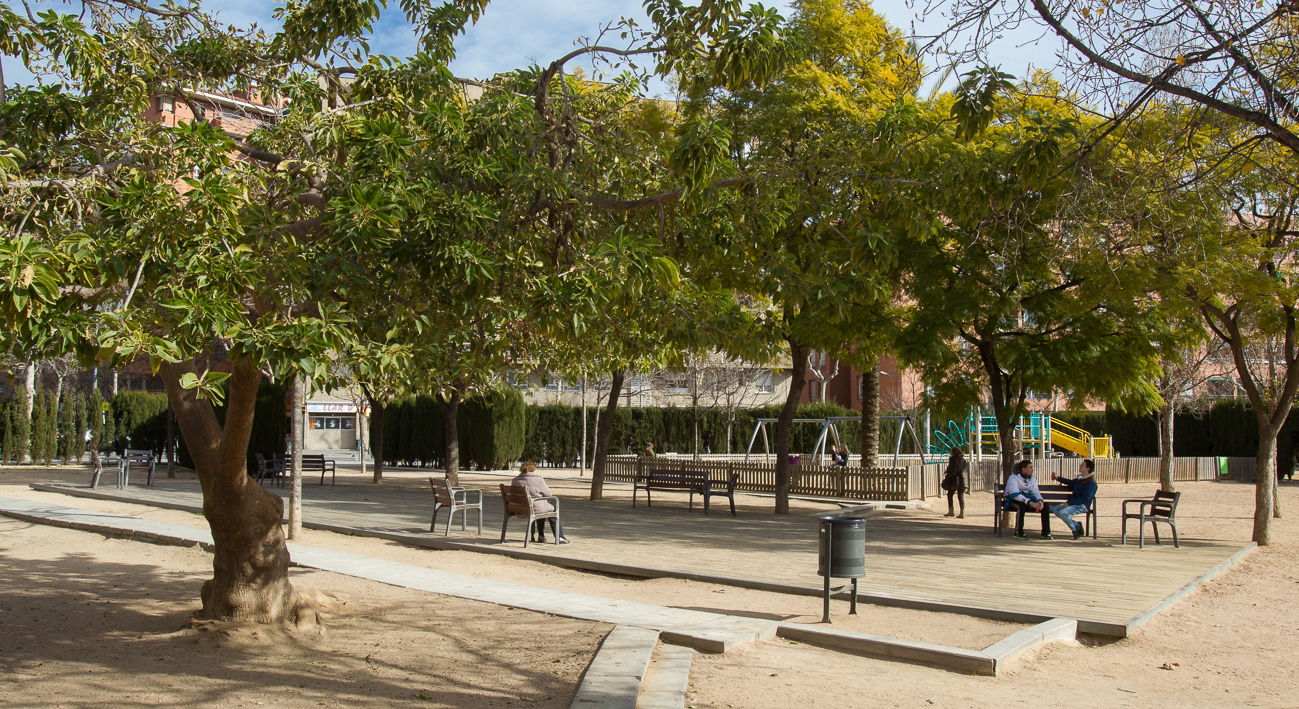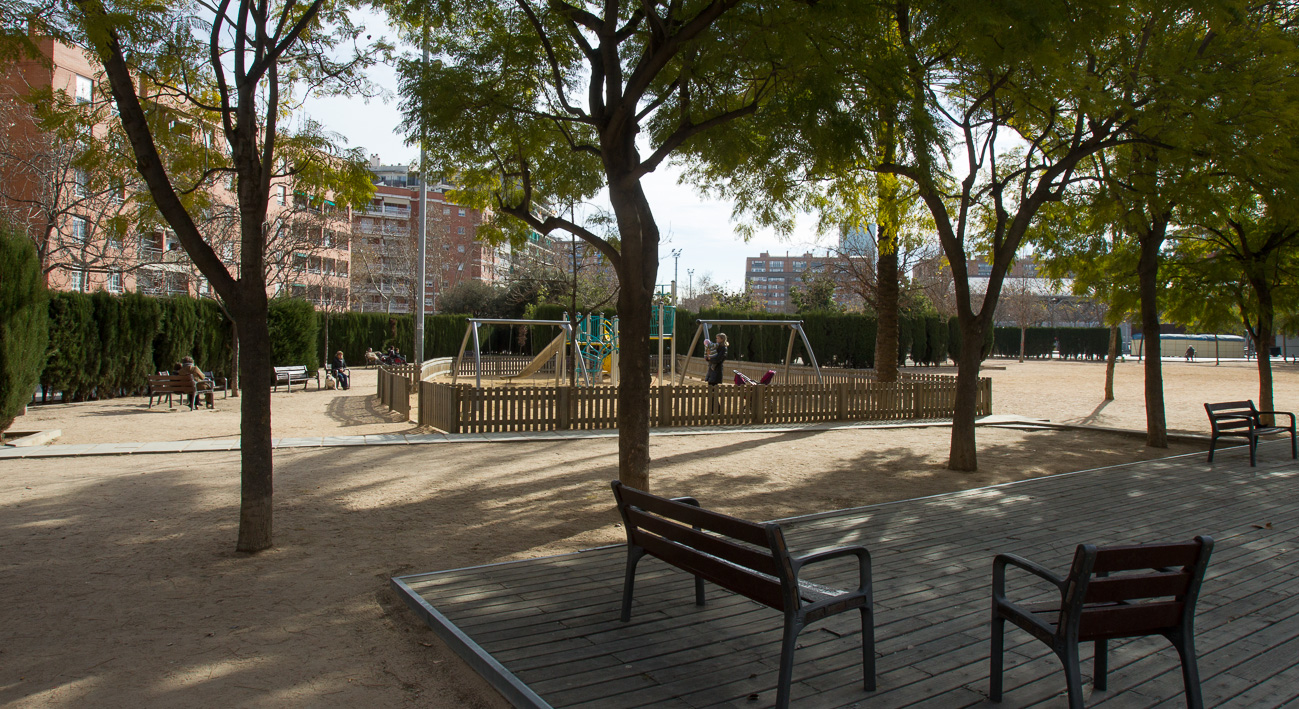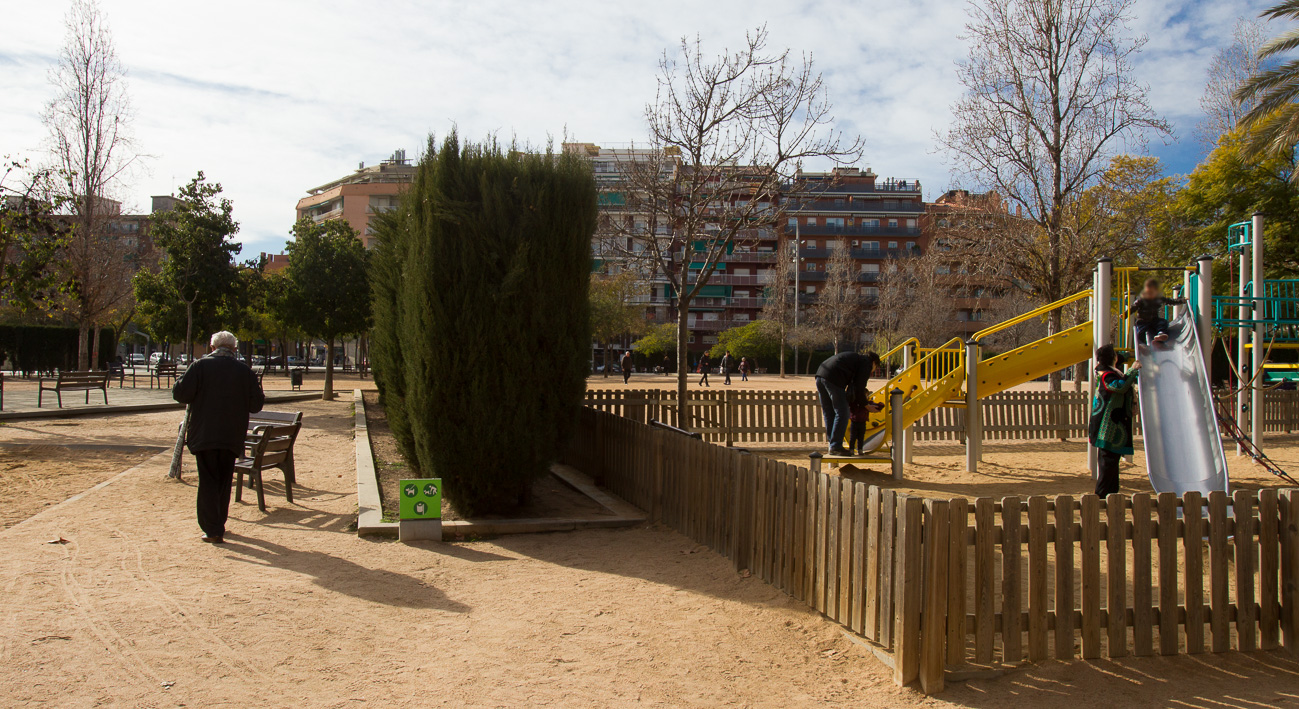The Clot de la Mel Gardens occupy a quadrangular area equivalent to a block in the Clot neighbourhood. Archaeological features, such as the tall chimney which acts as a landmark, remind us of the factory and industrial traditions of Sant Martí’s flour and textile mills. The gardens are divided into four formally equal areas with a large number of flowering trees.

Biodiversity
The first of these four groups has specimens of pata de vaca (Bauhinia candicans), golden weeping willow (Salix sepulcralis), lime trees (Tilia tomentosa) and Indian bean trees
(Catalpa bignonioides), sheltering behind which and next to a sculpted cypress hedge are a group of olive trees (Olea europaea).
Common features all over the square include an inner ring of trees encircling a central gravel space with groups of poplars (Populus nigra) and palm trees (Phoenix canariensis).
There are ombus (Phytolacca dioica) and ash
trees (Fraxinus angustifolia) planted in the second corner. Then there is a row of jacarandas (Jacaranda mimosifolia) and more ash trees.
As you get to the third area of trees, you pass by one of two children’s play areas, where you will see rows of kurrajongs (Brachychiton populneus) and, very nearby, a small group of holm oaks (Quercus ilex) and horse chestnuts (Aesculus hippocastanum).
But the last corner of the square has the most exotic species. There you can see a group of trees of heaven (Ailanthus altissima). These are also known as chouchun trees. There are Judas trees (Cercis siliquastrum) as well.

Art and Architecture
A large, quadrangular, gravelled square has become the focal point of the gardens, around which you will find a wooden platform with seats at each corner. These are local gardens, open to the whole neighbourhood, and extremely popular with older people, school children, teenagers and the general public. Among the urban furniture, the Montseny chairs and benches, designed by Leopoldo Milà and spread throughout the gardens, stand out.
A tall chimney acts as a landmark and reminds us of the factory and industrial traditions of Sant Martí’s flour and textile mills.

Landscaping and Design
A group of tipus (Tipuana tipu) extend from one of the entrances to the middle of the square, filling and providing shade in the centre. A few rows of sculpted cypresses act as perimeter fences between the gardens and the neighbouring streets. There are several tree plantings to ensure that, come spring and summer, the whole square combines green with the colours of the trees in blossom.
We recommend starting a walk round the park from this group of tipus (Tipuana tipu), which enter diagonally from the corner of C/ Andrade and C/ Lope de Vega and reach the centre of the square. This way you will describe a circle, from left to right. The order of the elements is repeated at every corner, with four wooden platforms creating a space explicitly designed for enjoying the light and warmth of the sun. These open living-rooms lead to the rectangular parterres on which groups of trees are arranged.
The best time for taking a stroll round these gardens is from spring, when the first trees to bloom are the Judas trees, and throughout the summer, when you can enjoy the blossoming catalpas, jacarandas, pata de vacas, lime trees, trees of heaven and horse chestnuts.
-
- Phone number
- Tel.: 010
-
- Titularity
- Public center
- Address:
- C Lope de Vega, 280
- Districte:
- Sant Martí
- Neighborhood:
- el Clot
- City:
- Barcelona
Timetable
| Periode | Dies | Hores | |
|---|---|---|---|
| de l'1 de novembre al 31 de març |
Tots els dies | de 10:00 h a 19:00 h | |
| de l'1 d'abril al 31 d'octubre |
Tots els dies | de 10:00 h a 21:00 h |
aproximada, en funció de
l'horari solar (tanquen
quan es fa fosc, al capvespre)
Ubicat a l'illa que formen els carrers: Lope de Vega, Andrade, Espronceda i Concili de Trento.






